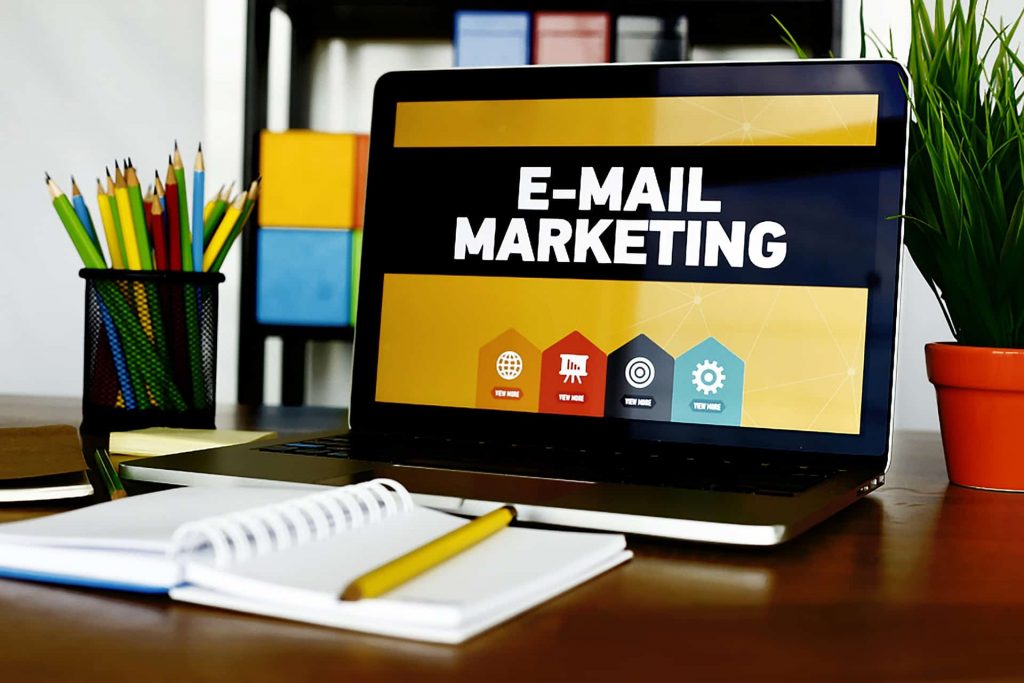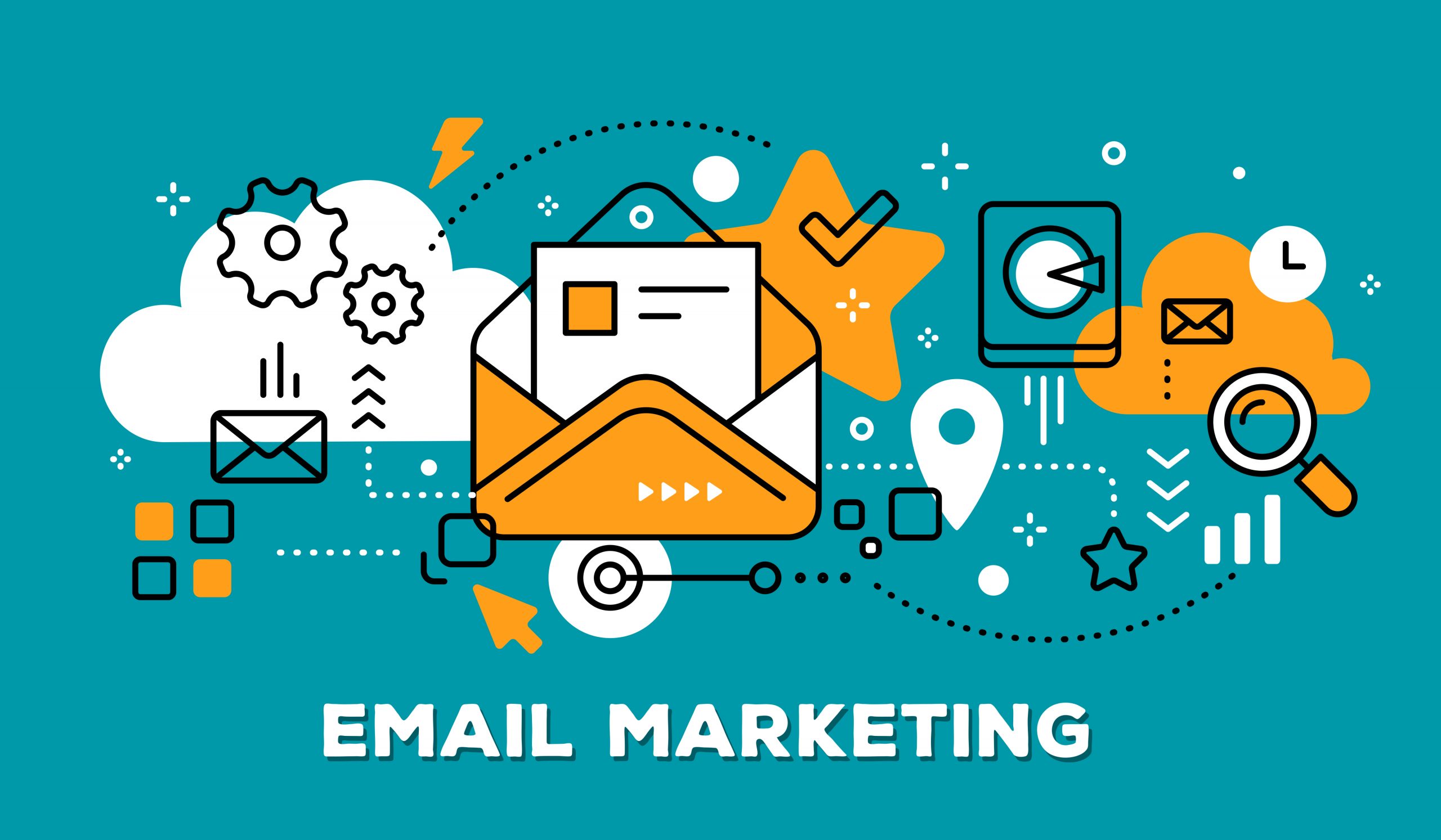In today’s highly competitive digital landscape, email marketing remains one of the most powerful tools for building strong customer relationships and driving sales. With the right strategies in place, email marketing allows businesses to connect with their target audience on a personal level, nurture leads, and ultimately convert them into loyal customers. In this article, we will explore how you can harness the power of email marketing to grow your business and enhance your customer engagement. From segmentation and personalization to optimizing your campaigns for maximum impact, we’ll cover everything you need to know to take your email marketing efforts to the next level.
Why Email Marketing Is Essential for Business Growth
Email marketing offers businesses a direct line of communication with their customers. Unlike social media or search engine ads, emails land straight in the inbox of your target audience, which increases the chances of your message being seen. It is one of the most cost-effective digital marketing strategies, offering high return on investment (ROI) when executed properly.

One of the main reasons email marketing remains so effective is its ability to nurture customer relationships over time. By sending personalized, valuable content that aligns with the needs and preferences of your audience, you build trust and loyalty. This level of engagement creates a lasting connection that can lead to more conversions and repeat sales.
Moreover, email marketing is measurable. With email marketing platforms, you can track important metrics such as open rates, click-through rates, and conversion rates, allowing you to continuously refine your campaigns for optimal performance.
Building Strong Customer Relationships Through Email Marketing
1. Segmentation for Targeted Campaigns
The first step in building strong customer relationships is understanding your audience. Segmentation plays a crucial role in ensuring that the right message reaches the right person at the right time. By dividing your email list into smaller, more targeted groups based on demographics, purchase history, or engagement behavior, you can send more relevant content.
For example, you could segment your email list by customers who have purchased certain products or those who have shown interest in specific categories. This allows you to send tailored offers and personalized content, which increases the likelihood of a positive response.
2. Personalization for Enhanced Engagement
Personalization is key when it comes to email marketing. Gone are the days of sending generic emails to your entire list. Customers today expect personalized experiences, and email marketing is an ideal channel for delivering that. Personalizing your emails by using the recipient’s name, sending product recommendations based on their browsing history, or offering personalized discounts can significantly boost engagement.
A study by Campaign Monitor found that personalized email subject lines increase open rates by 26%. So, whether you’re sending a welcome email, an abandoned cart reminder, or a post-purchase follow-up, always strive to make your emails feel personal and relevant to the recipient.
3. Providing Value with Useful Content
Your email marketing campaigns should not just focus on promoting products or services. To build long-term relationships with your customers, you need to provide them with value through useful content. Offering helpful tips, industry insights, or exclusive resources can position your brand as an authority in your field.
For example, a clothing retailer might send out fashion tips or style guides, while a software company could share best practices for using its tools effectively. By offering value through informative content, you create an ongoing conversation with your audience that encourages them to engage with your brand repeatedly.
4. Consistency in Communication
Consistency is key to building a relationship with your customers. Whether you’re sending weekly newsletters or monthly product updates, keeping your customers informed and engaged is essential. However, it’s important not to overwhelm your audience with too many emails. Find the right frequency that works for your audience and stick to it.
Establishing a consistent email schedule helps reinforce your brand message and keeps your audience engaged without feeling bombarded. Additionally, consistency helps you stay top of mind, so when your customers are ready to make a purchase, they’ll think of your brand first.
Driving Sales with Email Marketing

1. Creating Compelling Calls to Action
A great email is not just informative or engaging; it also drives action. Whether you want your subscribers to make a purchase, sign up for a webinar, or download a guide, your emails should include clear, compelling calls to action (CTAs). Make sure your CTAs are prominent, easy to understand, and encourage recipients to take the next step.
For instance, instead of just writing “Click here,” use action-oriented phrases like “Shop Now for 20% Off” or “Get Your Free Trial Today.” The more specific and enticing your CTA, the more likely it is that your recipients will follow through.
2. A/B Testing for Optimization
To ensure your emails are as effective as possible, A/B testing is crucial. A/B testing involves sending two variations of an email to a small portion of your list and determining which one performs better before sending it to the rest of your audience.
You can test various elements of your emails, such as subject lines, CTAs, email copy, and design. This allows you to fine-tune your emails for maximum engagement and conversion, ultimately driving more sales.
3. Abandoned Cart Emails
Abandoned cart emails are one of the most powerful tools for driving sales in e-commerce. These emails target customers who have added items to their cart but did not complete the purchase. By sending a timely, personalized reminder, you can encourage them to return and finalize their purchase.
To increase the effectiveness of your abandoned cart emails, consider offering a limited-time discount or providing free shipping as an incentive. This can help reduce friction and motivate customers to complete their transaction.
4. Time-Sensitive Offers and Promotions
Email marketing is an ideal platform for sending time-sensitive offers, such as flash sales or limited-time promotions. Creating a sense of urgency with phrases like “Hurry, offer ends soon!” or “Only 24 hours left!” can encourage recipients to take immediate action.
Additionally, segment your email list based on engagement levels. Send exclusive deals to loyal customers or high-value leads to increase their chances of conversion.
Measuring the Success of Your Email Marketing Campaigns
The effectiveness of your email marketing campaigns can be gauged through several key performance indicators (KPIs). Tracking these metrics will help you understand how well your campaigns are performing and where improvements are needed.

1. Open Rates
The open rate is one of the most important metrics to track. It tells you how many recipients opened your email and gives you insights into the effectiveness of your subject lines. A high open rate indicates that your emails are engaging and relevant to your audience.
2. Click-Through Rates (CTR)
CTR measures how many people clicked on links within your email. This is a strong indicator of how compelling your email content and calls to action are. A higher CTR means your subscribers are taking action, whether it’s making a purchase or visiting your website.
3. Conversion Rates
Ultimately, the success of your email campaigns is determined by how many conversions you generate. Whether it’s completing a purchase, signing up for a service, or downloading a resource, conversion rates measure how effective your email marketing is at achieving your business goals.
Conclusion
Email marketing is a powerful tool for building strong customer relationships and driving sales. By focusing on personalization, segmentation, valuable content, and consistent communication, you can create a loyal customer base that engages with your brand on a deeper level. Additionally, using effective strategies like compelling CTAs, A/B testing, and abandoned cart emails can significantly boost your sales and conversions.
As you implement these strategies, remember to continually measure and optimize your campaigns to ensure you’re getting the best possible results. With the right approach, email marketing can be a cornerstone of your digital marketing strategy, helping you grow your business and achieve long-term success.

Leave a Reply